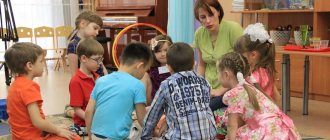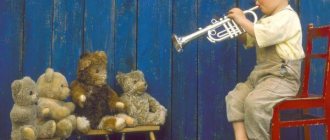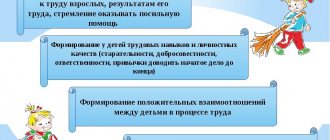Print out copybook numbers from 1 to 10 and numbers from 1 to 20 for preschool children: large and clear numbers with tips. Letters and numbers in words for children.
We can start learning about counting with children very quickly . Even in the first year of a child’s life, with the help of nursery rhymes, nursery rhymes, and finger exercises. However, at some point it's time to learn how to write down all those math calculations you do every day. And this important transition means not just the development of the child’s graphomotor skills, but also the transition from mechanical memorization to truly mathematical actions : analysis and processing of input data, counting, comparison, obtaining results.
Try it: Preschoolers enjoy estimating the time left until an expected event, counting money before making a purchase, or adding up points earned during a board game.
Handwriting is an important part of your child's development. Although handwritten notes are now quickly being replaced by tablets, laptops or other electronics, it is worth spending some time on.
Studying mathematics is impossible without knowing how to write numbers and figures, how to relate an abstract sign and a number.
Print large cursive numbers
Print out the copybook numbers prepared especially for preschoolers . Large font makes it easier to master the skill of writing numbers and does not interfere with frequent repetition. An additional large pattern of a well-known number makes it easier to remember its appearance.
Why do we need mathematical copybooks?
Math worksheets for preschoolers are a great way to develop hand motor skills and prepare hands for future workload. Mathematical copybooks are easier for a child due to the cells, which help to write straight lines. Vertical lines help the child write smoothly, and horizontal lines help the child see the working line. Also, in such copybooks there are more straight lines than rounded and smooth ones, as in alphabetic copybooks for writing. This makes the work of the child's hand easier, but also trains it.
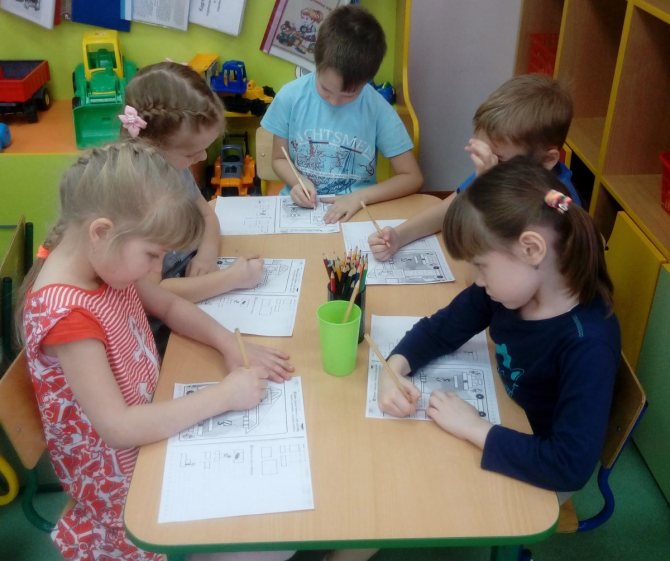
Group classes
In the process, the child learns:
- numbers, composition of numbers, solves examples;
- geometric figures, their names and differences from each other;
- mathematical signs.
The child’s memory, perseverance, attentiveness, imaginative and logical thinking, and creative potential develop. The child develops the ability to manipulate imaginary objects in his mind, which trains his imagination and allows him to learn to count in his head in the future.
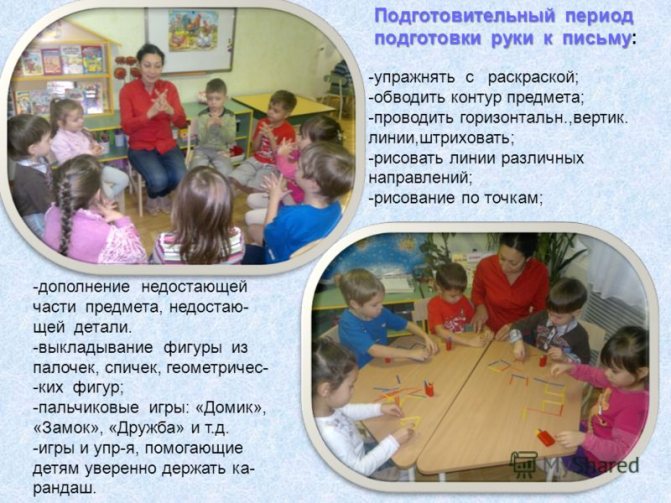
In addition to directly practicing writing and mathematics, you need to prepare your hand for writing while playing with your child.
Printed letters and numbers from 1 to 10
What a perfect copy it is
The registration must contain:
- various forms and topics of classes;
- in addition to traditional, interactive ways of solving problems;
- tasks should involve hearing, vision and memory;
- blocks with thinking and logic problems;
- pictures to attract attention, but not distract from the main material (they should not be too large);
- alternating tasks by type and load so as not to overtire the child;
- a plot that will involve you in the learning process so that the child looks forward to the next lessons;
- at the end of the topic, independent testing to consolidate what has been learned;
- a note that the publication complies with the requirements of the Federal State Educational Standard for preschool education.
To work effectively and obtain maximum results, it is important that the child has a specially equipped workplace for classes, which will be associated with acquiring new knowledge and skills. Classes are conducted in a good mood for both the child and the elder.
Drawing on the theme “Mimosa in a vase” for senior and preparatory groups
Note! It is important to catch the moment when a student begins to get tired and lose attention - classes should be stopped.
The sequence of completing tasks is also important, since the program is designed taking into account the load on the hand and brain. In order not to create negative impressions about the classes, you need to communicate in a calm tone, even if the child doesn’t succeed the first time.
Children's teaching aids are also designed for work in a kindergarten group or preparatory classes. The child will be able to complete the assignments independently, while the teacher will only correct the work. Many workbooks have a self-control unit at the end of each lesson. In it, the child himself evaluates the task he has completed and gives himself a grade. This could be an assessment, or maybe a depiction of a fairy-tale character in a playful form, where he would smile or frown depending on his success. This way of evaluating your efforts helps you understand the importance of your classes and motivates you to try and put more effort into future tasks.
Important! Initially, this attitude of assessment should be established on the part of an adult.
Colored copybooks: print out writing numbers from 1 to 10
Recipes for the middle group
The middle group manuals create first impressions of knowledge. Therefore, it is important to practice without pressure, in a playful way. For the 3-4 year old child's copybooks, he was offered mainly pictures and riddles, where he drew and shaded most of them.
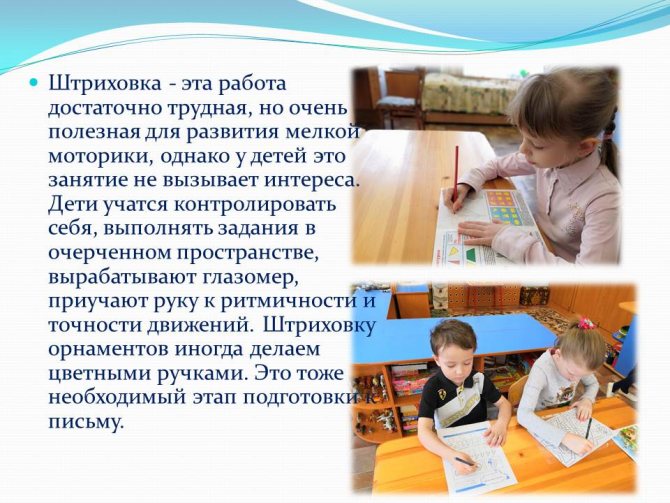
Why do you need shading?
Copybooks for small children of the middle group aged 4-5 years already include numbers from 1 to 10. Most of the figures have rounded shapes, which are difficult for a child to write. Therefore, tasks are distributed in a playful manner, consistently distributing the load. The tasks are aimed at drawing straight lines, circles and their parts, shading, developing motor skills and thinking. All the tasks are practical: finish drawing, counting, circling and coloring.
Copybook coloring pages with numbers for children
Senior group
Mathematics copybooks for preschoolers aged 5-6 years smoothly increase the load on the hand and intellect. The manual introduces the child to numbers from 10. Mathematical signs and figures from geometry are already included here. Complex exercises are diluted with game blocks for attention, memory and thinking. They offer to complete the picture, connect the lines, and build a dot-by-dot drawing. Tasks of a higher category of complexity are aimed at developing independence, understanding the assigned tasks and searching for solutions.
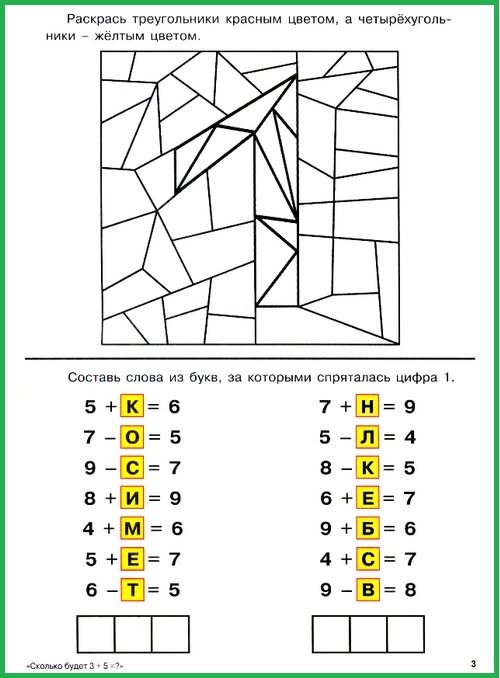
Example tasks
Copybooks with numbers and numbers from 1 to 20
Recipes in the preparatory group
Editions for children 6-7 years old contain tasks that prepare the child for school. The gaming mood is preserved, but the tasks are aimed at reflection, logic, and the development of ideas about geometric bodies. There is an analysis of the composition of a number, ordinal counting, and comparison of numbers. Solutions to simple problems already include examples of addition and subtraction.
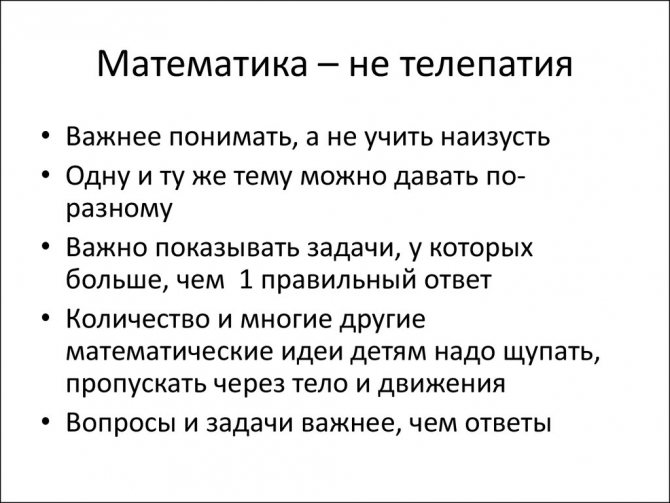
In the preparatory period, it is important not how correct the answer the child gives, but how he reasons and comes to an answer to the question


